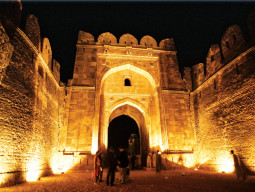
ISLAMABAD:
Many Pakistanis might not be aware that South Koreans trace the roots of their Buddhist heritage to centres of Gandhara civilisation located in present-day Pakistan.
Buddhism is the largest faith in South Korea and Korean archaeologists and monks have visited Pakistan in the past for research as well as pilgrimage.
“Gandhara is considered the second home for Buddhism by Koreans,” says Quaid-e-Azam University’s Taxila Institute of Asian Civilisations (TIAC) Director Dr Muhammad Ashraf Khan. “It is because Maranantha, the Gandharan monk who introduced Buddhism to South Korea, belonged to Swabi in Khyber-Pakhtunkhwa.”
Now, academic exchanges and technical knowledge sharing between Pakistani and Korean archaeologists are expected to expand further.
Geumgang University — a South Korean Buddhist university — will sign a Memorandum of Understanding for scientific and education cooperation with TIAC very soon, said Dr JeeYeon Han, a professor at Geumgang University, during a visit to TIAC on Friday.
Han is leading a three-member delegation of Korean professors of Archaeology and Buddhist Studies from Geumgang and Dongguk universities to Pakistan. The delegation visited TIAC’s department building and was given a tour of the centre’s museum, library and conservation laboratory.
Khan briefed the delegation about TIAC’s recent excavation of a third century Buddhist mini-monastery in Badal Pur near Taxila. Archaeologists and students from TIAC had unearthed 40 by 40 metre annex near Badal Pur’s main monastery in March, which is believed to have been built to accommodate an influx of students at the monastery.
The Korean professors also exchanged their own field research with students of archaeology enrolled at TIAC.
Khan said the MoU will be beneficial for Pakistani archaeologists.
“The Koreans are much more advanced than Pakistan in terms of field research techniques and conservation practices,” he said. “They also have very nice archaeology museums, they can help us a great deal.”
The MoU will facilitate student exchange between the universities, Khan said. Cooperation regarding restoration and preservation of excavated items, sharing of research documentation, joint exhibitions, faculty visits and joint research programmes will also be included in the MoU’s draft.
In June, professors from the School of Archaeology at China’s Peking University had also announced interest in signing a MoU with TIAC. Khan said both memorandums are being drafted and will be officially signed by October 2013.
Professor Mu Wang Moon of Seoul’s Dongguk University and professor Gil-Am Seok of Geumgang University are accompanying Dr Han as members of the delegation.
Published in The Express Tribune, July 13th, 2013.
COMMENTS (2)
Comments are moderated and generally will be posted if they are on-topic and not abusive.
For more information, please see our Comments FAQ



































































@t khan:
"I am ashamed to mention my nationality to people here in south east Asia". By the way,what do you mean by this phrase? I think you must be ashamed on your comment.By the grace of almighty Allah,we have so many things to proud,no need to mention here, Please avoid to put such low comments which relates to our emotions,honor and dignity......GOD bless Pakistan.
I am from mardan and there a number of budhist structures there. I am proud of our Buddhist culture . . I am ashamed to mention my nationality to people here in south east Asia. . But I will now surely have some proud things to say to the south Koreans that I meet!.
T khan Malaysia